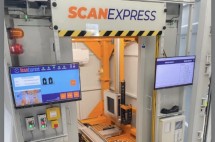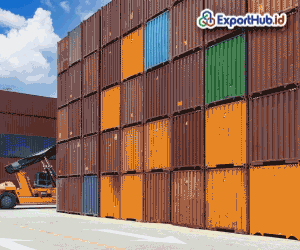How to cybersecurity: Software supply chain security is much bigger than you think
By : By Jonathan Knudsen - Senior Security Strategist, Synopsys Software Integrity Group | Thursday, March 24 2022 - 13:30 IWST

Jonathan Knudsen - Senior Security Strategist, Synopsys Software Integrity Group
INDUSTRY.co.id - My wife and I have four children, which means we’ve done a ton of shopping at Costco over the years. First it was diapers, then cereal, then every other kind of food, all of which provided significant savings for our family of six.
Costco sells plenty of other stuff too, and for whatever reason I am always tempted to get that gazebo, or that sectional couch, or that pair of kayaks.
The thing about Costco, though, is that it is a cavernous warehouse, which creates The Costco Effect: everything looks smaller than it really is. If I ever bought that gazebo, I wouldn’t be able to fit it in my back yard. If I ever got that couch, I might be able to fit it in my family room, but I probably wouldn’t have space to walk.
The Costco Effect applies on a smaller scale, too: it might seem like a good idea to buy 24 rolls of toilet paper (what a great price!), but do you have the space to store it?
Components of the software supply chain
Software supply chain security is similar. You hear about it or read about it, and it makes sense, and you think you have understood. But when you take it home and try to apply it to your own organisation and your own processes, you realise it is much bigger than you thought.
The software supply chain is everything from the idea of the application all the way through to customers using it.
The part that everyone understands is how third-party components are used as building blocks to assemble an application. These components are almost always open source software components, although third-party commercial components are also sometimes used.
It’s clear that the security of these components has a direct impact on the security of the assembled application. Software composition analysis (SCA) tools like Black Duck® do a good job of helping development teams keep track of their components and manage risk from both a vulnerability perspective and a licensing perspective.
However, managing risk in the software supply chain also means security must be considered at the time of component selection. When developers are creating new functionality, they might choose a component to be included in the application. The development process needs to have some safeguards so that when developers choose components, they base that choice on risk and not solely on functionality.
Furthermore, where do the components come from? Developers have available to them a variety of technologies that easily retrieve components, such as npm or Maven. Can you trust these? What if the component repository is compromised? How do you know you’re getting the thing you asked for? A comprehensive security process addresses these questions.
Developer tools and deployment of applications
Build tools are another category that is easy to overlook when thinking about the software supply chain. This includes developers’ editors, plugins, compilers, utilities, and anything else used in building an application. In airplane manufacturing, for example, the supply chain includes the seats, engines, rivets, and other parts that are assembled into an airplane, but it also includes the wrenches, rivet guns, scaffolding, and anything else that is used during the assembly of the airplane.
Deployment of an application is also part of the software supply chain. Nowadays many applications are deployed into containers, so the same questions apply to software supply chain security. How are container images selected? What types of risk assessment have been done or need to be done? And just as important, where are the container images coming from? Can you trust the repository?
The software supply chain might be bigger than you thought, but the solution is a comprehensive approach to security. Nobody talks about airplane manufacturing separate from safety — every design decision, every selection of parts, every phase of airplane manufacturing has an undercurrent of safety.
Similarly, security and software are becoming inextricably entwined. The process that leads from application design through implementation, deployment, and maintenance must have security infused at every phase.
Managing risk in the software supply chain is challenging but important. Software risk is business risk. Using a holistic approach to reducing risk in the software supply chain provides solid benefits in building trust in software.
Read Also
Wireless Logic Selected By Thales As IoT Connectivity Partner
Totolink Strengthens Commitment to Innovative and Reliable Network…
BDDC Inaugurates JST1 TIER IV Data Centre in Jakarta to Strengthen…
MoreLogin, the World's #1 Antidetect Browser, Showcased at Affiliate…
Experts gather in Nanning to support high-quality development of…
Today's Industry

Jumat, 02 Mei 2025 - 10:46 WIB
Binawan and Government Support Indonesian Nurses in Europe through Scholarships
In the midst of the viral #KaburAjaDulu hashtag as a symbol of the young generation's disappointment with domestic working conditions, Binawan responded with real action: dispatching Indonesian…

Jumat, 28 Maret 2025 - 22:21 WIB
SUNeVision Initiates MEGA IDC Phase Two Development
SUNeVision, the technology arm of Sun Hung Kai Properties (SHKP), today announced the commencement of construction for Phase Two of MEGA IDC in Tseung Kwan O. As Hong Kong's largest data centre…

Jumat, 28 Maret 2025 - 22:07 WIB
TDL Records New Revenue Record of IDR 25 Trillion in 2024 Ahead of 50th Anniversary
PT Metrodata Electronics Tbk (MTDL), the largest technology Company with the most complete IT and telecommunications products in Indonesia, managed to record a revenue of IDR 25 trillion in…

Jumat, 28 Maret 2025 - 21:53 WIB
Microvista Expands International Presence with Mobile CT System ScanExpress
The German specialist in industrial computed tomography and non-destructive testing, Microvista, announces the European expansion of its innovative mobile CT system, ScanExpress. The system…

Jumat, 28 Maret 2025 - 21:44 WIB
Turning Loss into Profit, INOV Optimistic in Maintaining Positive Performance this Year
PT Inocycle Technology Group Tbk (INOV:IJ) Indonesia's leading and largest PET waste recycling Company managed to book sales of IDR 629 Billion in 2024, an increase of 4.8% compared to the previous…

















News Comment